Discover financial empowerment resources
Discover financial empowerment resources
Poverty stems from experiences of exclusion and isolation in addition to a lack of financial resources, especially for equity deserving members of society. When individuals feel disconnected and undervalued, it can lead to a cycle of poverty that can be further perpetuated by race, ethnicity,...
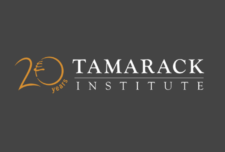
This report presents the findings of research aimed at advancing social innovation and social finance in Canada. The study focused on understanding the enablers and barriers of social finance, as well as exploring why social purpose organizations (SPOs) engage in social finance. The research also...
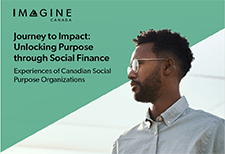
Fresh perspectives and new approaches are needed to generate results and effectively address the complexity and interconnectedness of the social and environmental issues confronting communities. It is imperative that we build our collective capacity in the practice of community innovation. It is...

This self-paced online course will help you learn about behavioural insights and how they can help you increase impact in simple, practical ways. In this self-paced learning experience, you will learn foundational skills and tools that you can apply immediately to your work, creating a long-lasting...

The following snapshot aims to highlight how Anti-Black racism and systemic discrimination are key drivers of health inequalities faced by diverse Black Canadian communities. Evidence of institutional discrimination in key determinants of health is also presented, including education, income, and...
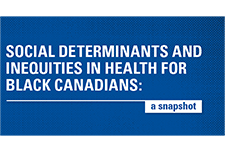
With a growing number of barriers to accessing vital services, we need to think critically about accessibility and people’s services experiences in the social and public sector. Human-centred design is an approach which centres the voices and lived experiences of people who are impacted in the...

The Ganohonyohk/Prosperity Research Project explored how seven Indigenous Friendship Centre communities in Ontario understood the concept of prosperity. The guiding research question of “How do urban Indigenous Friendship Centre communities in Ontario view a prosperous/wealthy life?” was used...

The National Conference on Citizenship (NCoC) developed the Pandemic to Prosperity series. It builds on NCoC’s data infrastructure and advocacy network developed for its national Civic Health Index, with The New Orleans Index, which informed many public and private decisions and actions...

Nearly a year since the outbreak began, and eight months since it was declared a global pandemic, COVID-19 has devastated hundreds of thousands of lives and millions of people’s economic prospects throughout the country. To date, the effects of this crisis have been wide-reaching and profound,...

This report offers an intersectional perspective on how Canada can recover from the COVID-19 crisis and weather difficult times in the future, while ensuring the needs of all people in Canada are considered in the formation of policy. YWCA Canada and the University of Toronto’s Institute for...

This report presents an analysis of the impact of COVID-19 on the nonprofit sector drawn from data collected in CCVO's Alberta Nonprofit Survey, data from surveys by the Alberta Nonprofit Network, Imagine Canada, and partner organizations across the country. The analysis in this report shows that...

The House of Commons Finance Committee recently released its call for pre-budget consultation briefs as the government considers its policy priorities for the 2021 federal budget. This toolkit created by Imagine Canada provides information on the reasons to submit a pre-budget consultation...
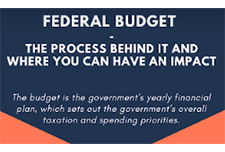
The COVID-19 crisis is a public health crisis and an economic crisis. The Economic and Fiscal Snapshot 2020 lays out the steps Canada is taking to stabilize the economy and protect the health and economic well-being of Canadians and businesses across the...

While social finance could have a transformative impact on the funding and financial landscape, relatively little is understood about its implications for charities. This webinar presents the results of a national survey of over 1,000 registered charities undertaken by Imagine Canada to better...

This guide provides step-by-step materials to help communities form networks to increase their capacity to prevent and respond to elder financial exploitation. The planning tools, templates and exercises offered in this guide help stakeholders plan a stakeholder retreat and training event, host a...

The Collaborative to Advance Social Health Integration (CASHI) is composed of a community of 21 innovative primary care teams and community partners committed to increasing the number of patients, families and community members who have access to the essential resources they need to be healthy....

Bank On coalitions are locally-led partnerships between local public officials; city, state, and federal government agencies; financial institutions; and community organizations that work together to help improve the financial stability of unbanked and underbanked individuals and families in their...
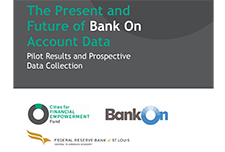
Bank On coalitions are locally-led partnerships between local public officials; city, state, and federal government agencies; financial institutions; and community organizations that work together to help improve the financial stability of unbanked and underbanked individuals and families in their...

Community engagement is about ensuring that those most impacted by social challenges have a say in designing and implementing solutions. The participation of intended beneficiaries and their families, neighbors, and trusted leaders can be an integral part of data-driven processes to achieve better...
This is an infographic on the Adaptive Prosperity framework developed by the Indiana Association for Community Economic Development. This is a collaborative vision of empowerment and assets focused on all parts of a...
The report’s primary aim was to analyze the existing microfinance industry in the United States from the point of view of its ability to scale up services to the underserved (the working poor) and its sustainability, i.e., its ability to operate such that MFIs cover all of their operating costs,...
This is a list of 27 indicators of effectiveness for backbone organizations, produced by FSG and Greater Cincinnati Foundation. This includes topics like strategy, alignment, shared measurement practices, and...
This guide contains 12 recommendations on how to design pilot projects with scaling up in mind, as well as a checklist that provides a quick overview of the scalability of a project that is being planned, proposed, or in the process of implementation. Based on a combination of a comprehensive...
These worksheets are to be used in conjunction with the ExpandNet/WHO document entitled Nine steps for developing a scaling-up strategy. For more extensive guidance on scaling up, see Practical guidance for scaling up health service innovations. These and other scaling up tools are available on the...
This article is about evolving frameworks for collective impact. CI is now a permanent – even dominant – part of the landscape of community change. We believe that it’s time for an evolution in the revolution. First, there has been enough experimentation with CI, by diverse communities...
